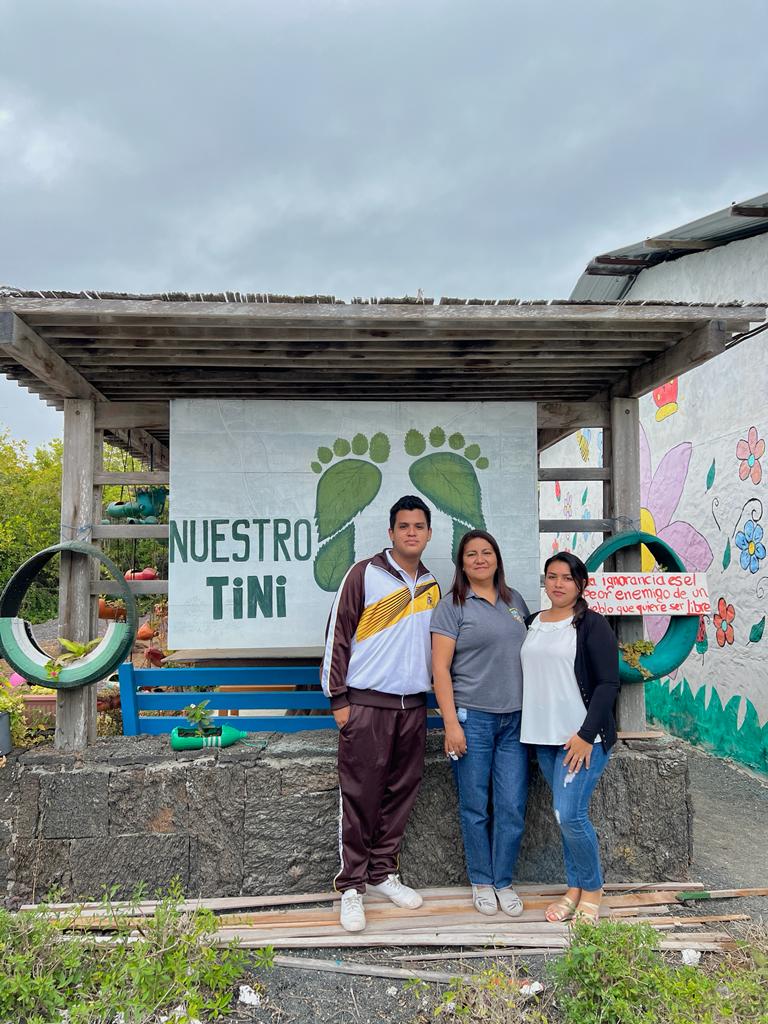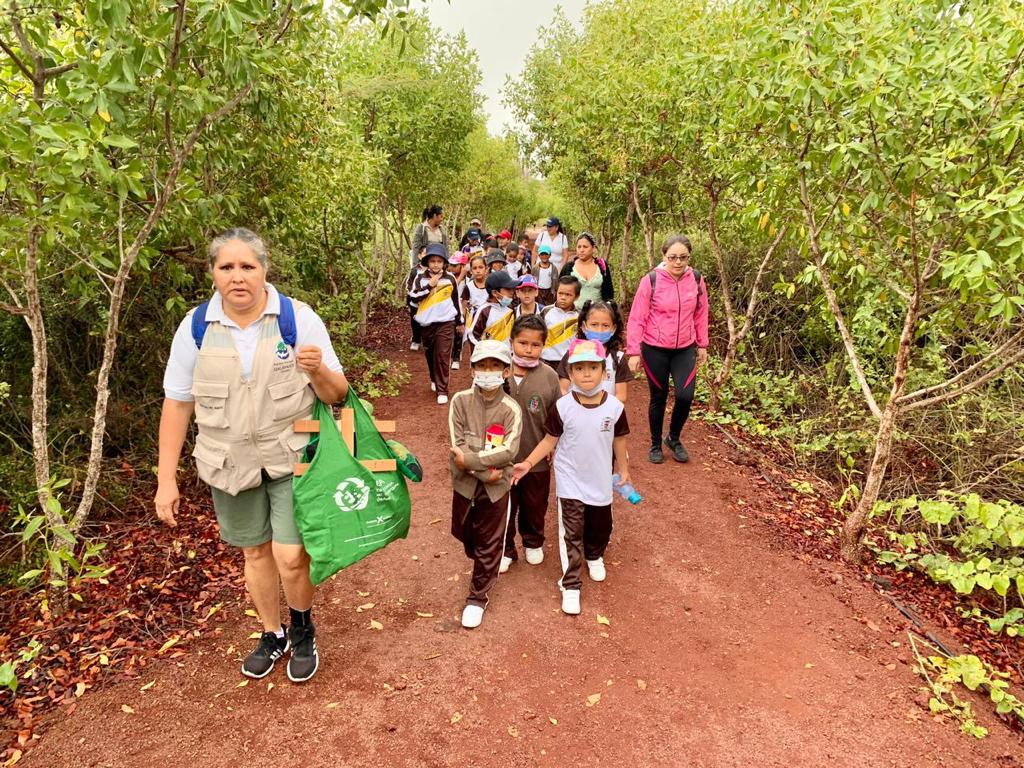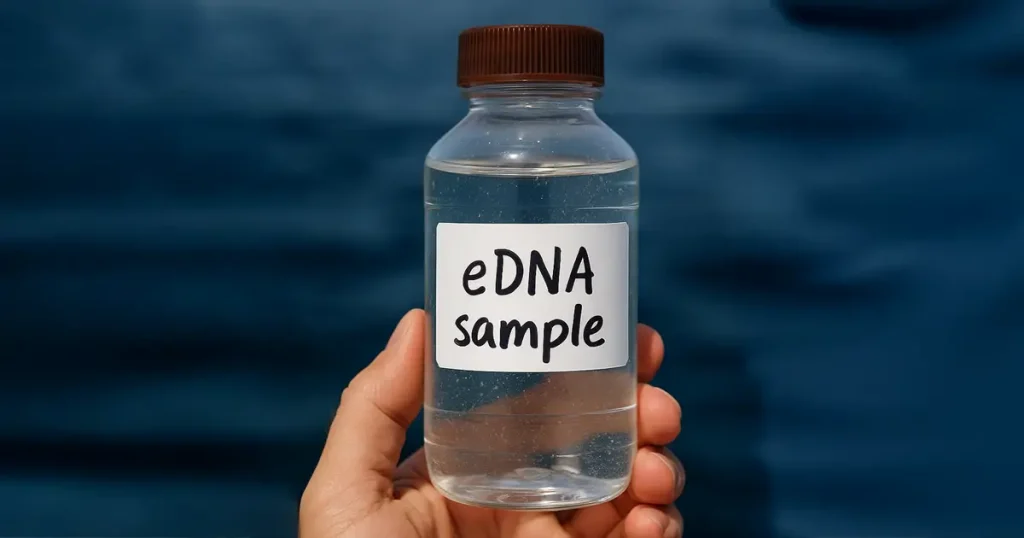Local Solutions for Local Challenges
by Richard Knab, Director of Strategic Partnerships
//Versión es español abajo.//
As a leading conservation organization, Galápagos Conservancy believes that it is our responsibility to invest in the long-term protection of the Galápagos Islands by educating Galápagos youth in the principles of conservation and sustainability.

Our Education for Sustainability Program operates under the guiding principle that effective conservation requires those living and working in the Islands to understand and appreciate their unique home. That’s why over the past six years, all 7,300 PreK through 12th grade students have learned core subjects through month-long deep dives into essential topics in Galápagos, ranging from sustainable food systems and food security to invasive species, marine and terrestrial biodiversity, and sustainable energy.
Sindi Vélez, mother of two elementary students, remembers that not long ago, learning only took place in classrooms, and children didn’t learn much about Galápagos at school. “I am thrilled to see my children learning outside, where teachers help them link theory and practice and push them to work together and exchange ideas as they experience their natural and man-made surroundings.”
Juan Carlos Valladares, a junior in high school, appreciates the opportunity to learn about the intersection of economic, environmental, and social realities in the Islands. “We just finished an excellent month of learning about the Galápagos Marine Reserve — its most important species, the dangers of overfishing and bycatch, and traditional fishing methods that can help sustain fisheries. Much of this happened in the community, where we experienced firsthand what we need to do to protect and conserve all that surrounds us.”
At the core of this major shift in education are 430 Galápagos teachers who have worked tirelessly to develop novel teaching strategies and a team of 40 teacher-leaders who are actively involved in the professional development of their peers. One of these leaders, Patricia Padilla, believes cooperation is key. “Six or seven years ago, teachers of different subjects never collaborated. Now there is intentionality associated with the way we work with one another. The teaching approaches we implement are exciting, but teacher collaboration and teamwork are just as important.”
Galápagos Conservancy is pleased to announce that this year, it has restructured the Education for Sustainability Program, transitioning it entirely to Galápagos to be operated by Galapapagueños, led by the recently hired Mr. Lenin Rogel, who along with his team will ensure all students in the Islands graduate from high school as conservation-minded architects of a more sustainable Galápagos.

Soluciones locales para desafíos locales
Por: Richard Knab, Director de Asociaciones Estratégicas
Como organización líder en conservación, Galápagos Conservancy cree firmemente que es nuestra responsabilidad invertir en la protección a largo plazo de las Islas Galápagos, para ello es elemental educar a los niños y jóvenes galapagueños en los principios de la conservación y la sostenibilidad.
Nuestro Programa de Educación para la Sostenibilidad se rige por el principio de que la conservación efectiva requiere que quienes viven y trabajan en las islas comprendan y valoren su hogar único. En los últimos seis años, un total de 7.300 estudiantes de preescolar a 12º grado, han aprendido las materias básicas a través de profundos análisis mensuales de los temas esenciales en Galápagos, desde sistemas alimentarios sostenibles y seguridad alimentaria hasta especies invasoras, biodiversidad marina y terrestre y energías sostenibles.
Sindi Vélez, madre de dos estudiantes de primaria, recuerda que no hace mucho, el aprendizaje sólo tenía lugar en las aulas, y los niños no aprendían mucho sobre Galápagos en la escuela. “Estoy emocionada de ver a mis hijos aprendiendo afuera, donde los maestros les ayudan a vincular la teoría y la práctica y los impulsan a trabajar juntos e intercambiar ideas mientras experimentan su entorno natural y artificial”, dijo Sindi.
Juan Carlos Valladares, un estudiante de secundaria, aprecia la oportunidad de aprender sobre la interacción de las realidades económicas, ambientales y sociales en las islas. “Acabamos de terminar un excelente mes de aprendizaje sobre la Reserva Marina de Galápagos: sus especies más importantes, los peligros de la sobrepesca, la captura accidental, y los artes de pesca tradicionales que contribuyen a una pesquería sostenible. Gran parte de esto lo aprendimos en la comunidad, donde experimentamos de primera mano lo que necesitamos hacer para proteger y conservar todo lo que nos rodea”.
En el núcleo de este importante cambio en la educación están los 430 docentes de Galápagos que han trabajado incansablemente para desarrollar estrategias de enseñanza innovadoras y un equipo de 40 líderes pedagógicos que están activamente involucrados en el desarrollo profesional de sus colegas. Una de estas líderes, Patricia Padilla, cree que la cooperación es clave. “Hace seis o siete años, los docentes de diferentes materias nunca colaboraban. Ahora hay intencionalidad asociada a la forma en que trabajamos juntos. Los enfoques de enseñanza que implementamos son emocionantes, pero la colaboración y el trabajo en equipo entre los docentes son igual de importantes.”
Galápagos Conservancy se complace en anunciar que este año ha reestructurado el Programa de Educación para la Sostenibilidad, trasladando su coordinación por completo a Galápagos para que sea operado exclusivamente por galapagueños. El programa es liderado por el recientemente contratado M.Sc.Lenin Rogel, quien junto con su equipo se asegurará de que todos los estudiantes de las islas se gradúen de la escuela secundaria como arquitectos de Galápagos, más conscientes de la importancia de conservar su maravilloso hogar.



